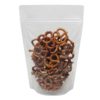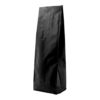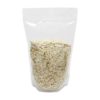Blog
Men’s Grooming Market Primed for Incredible Growth Through 2023
Projected Growth
Male grooming is finally taking center stage, and the cosmetics industry is seeing a gender-backed shakeup.
Globally, the market for men’s grooming products is valued at around US $57.7 billion as of 2017. This figure is expected to nearly double by 2023 as analysts predict a valuation of US $78.6 billion and a 5.3% CAGR.
Men’s grooming wasn’t always such a major force. Earlier decades didn’t put too much emphasis on it; men were still expected to appear clean and fresh, but for context, hairy chests and natural odor were also still very popular.
During that time, and until recently, men’s grooming products have been limited to the basics: shampoos, deodorants, shaving creams, aftershave creams and colognes.
Meanwhile, the repertoire for females was expanding even further. Today, as the catalog for men’s grooming products continues to expand, items that were initially spared for female grooming, including facial creams, serums, bronzers, concealers and anti-aging creams.
Drivers
It’s not easy to pinpoint one major reason as the driving force behind the current growth of the market for men’s grooming globally. But a few reasons compound to form the force that generates the drive according to experts, and some of them are listed below.
The influence of emerging media
Over the years there’s been a growing consciousness among men regarding their appearance health and overall public projection.
The desire to look better among men can partly be linked to increasing access to media worldwide, and its continuing role in the generation of a new general understanding in society of what men’s grooming should actually be like.
Today, the media projects a grooming man as the ideal man through television shows, celebrities, ad campaigns and more, all of which reach millions of viewers every day.
Changing ideals of masculinity
Emerging media is only one reason for the change of course. Society’s notion of masculinity is another, and it continues to evolve significantly with every decade. The idea of a rough-looking, unshaven and foul smelling as the ideal look for a man is dying away fast.
The aforementioned habits of growing chest hair and wearing hair long are some of the aspects of what used to be symbols of traditional masculinity that are being dropped and replaced with newer, more popular alternatives.
The growth and expansion of e-commerce
One another major driver of the global boom in desire for men’s grooming products is the rise of e-commerce. Over the years, e-commerce has gone mainstream, thanks to the growth of online behemoths like Amazon and eBay.
The penetration of e-commerce into the mainstream means that millions of men are finding it easier to access grooming products. The e-commerce industry continues to simplify and streamline all its process, hence faster processing times, faster deliveries and lower prices, which means that the upward growth trend in the men’s grooming product category is likely to rise further as well.
Social media and its effect on men
The growth of social media is another major driver; the famous global platforms like Facebook, Twitter, WhatsApp, YouTube and Instagram have played a direct role in bridging the gap between millions of men and the makers of men’s grooming products. The rise of influencers that directly inspire men to purchase new grooming products is a result of social media and shows no signs of slowing down.
A new interest in anti-aging
Perhaps the most potent reason for the new shift in the demand for men’s grooming cosmetics is the fact that even men are starting to worry about aging, and purposely fighting it in any way they can.
Not all men are blanketed under this theory of course, but statistics show that a growing number of men are actively trying to combat anti-aging today in the same way women have been doing ever since anti-aging cosmetics were first introduced and with near-equal dedication.
According to a Mintel study carried out on over 1000 adult men in the United States, more than 1/3 of adult men in the US care about and actively fight aging. That number rises even further in adult men with children.
Facial skin care and protection is also a big deal among men today, with the survey noting an 84% affirmation of the use of facial skin care products among American men aged 18 to 44. 70% of men in the same study said they used sunscreen, a sign of increasing worry about aging in men.
Such numbers are easy proof that men’s grooming is already taking center stage. As for the point of contention, aging is already a major point of discussion today, and so the creation of any health product that can thwart it and its negative effects is bound to be popular.
Growing product categories
As the market for men’s grooming products continues to expand, particular product categories are seeing more demand than others. Some of these categories were low performers only a few years ago.
Previously, as noted above, men were limited to most basic grooming products such as deodorants and colognes for their odor, shaving cream and aftershave for their bathroom shaving needs plus shampoo and bathing soap for their hair and bathing needs. This might seem enough, but compared to the women’s grooming catalog at the time, it was basic.
Today, as men’s grooming takes center stage, some product categories are seeing a major boost. Male toiletries in particular are noted as the most profitable, according to Research and Markets’ Male Grooming Products Market Report for 2018-20123. Other categories such as electric products are also in higher demand than before.
The data on the ground echoes the estimation. The Mintel study found that over 95% of men used deodorants today while about 87% admitted to using general body cleansing products.
Conclusion
With ever-changing notions of masculinity and looser restrictions on what men can use on their bodies, it’s expected that the market for men’s grooming products will rise even further by 2020. For manufacturers looking to cash in, this is the time to sow.





